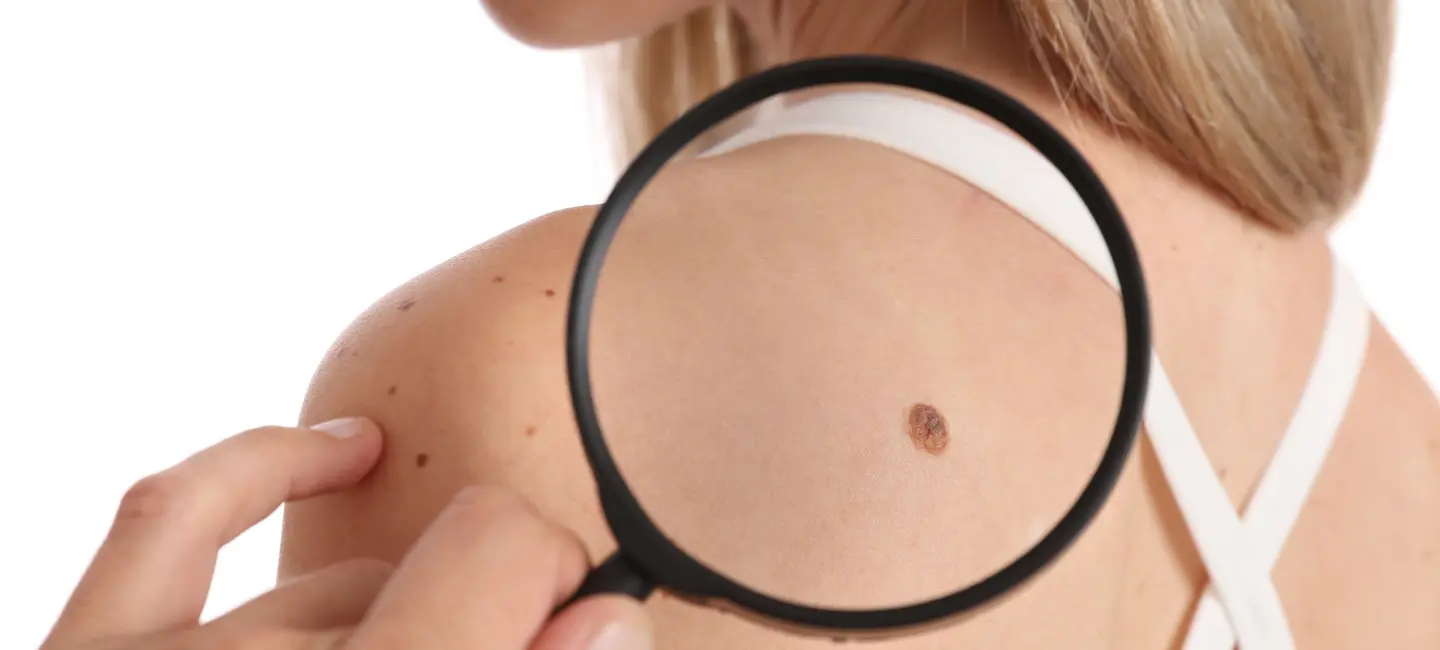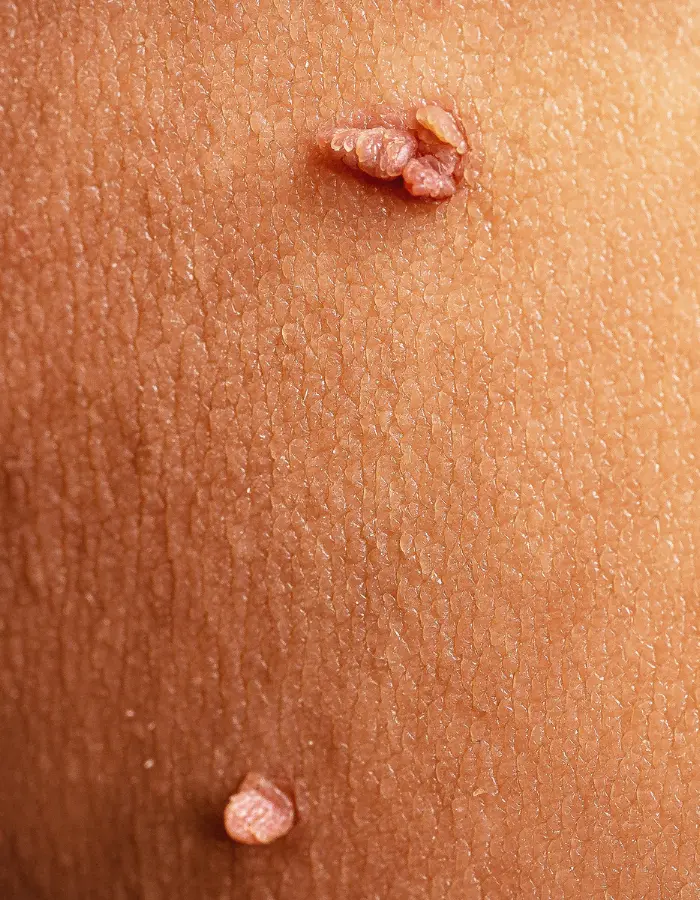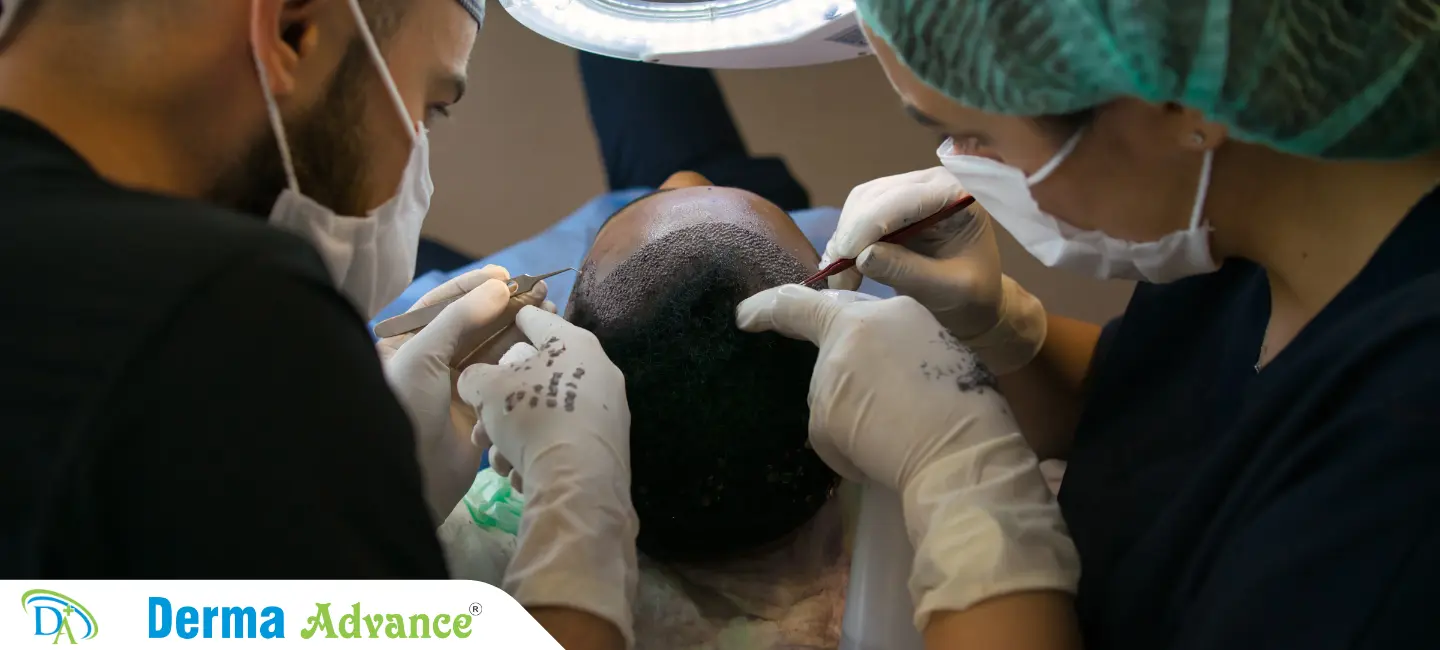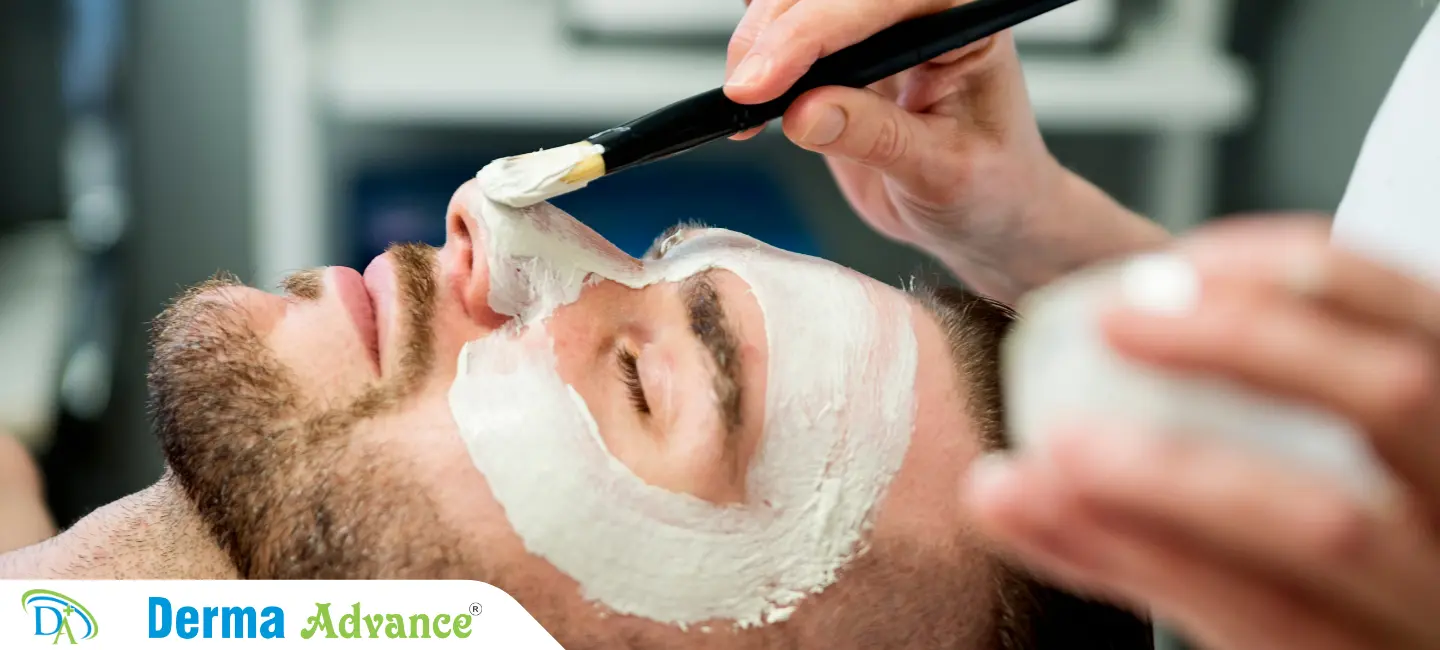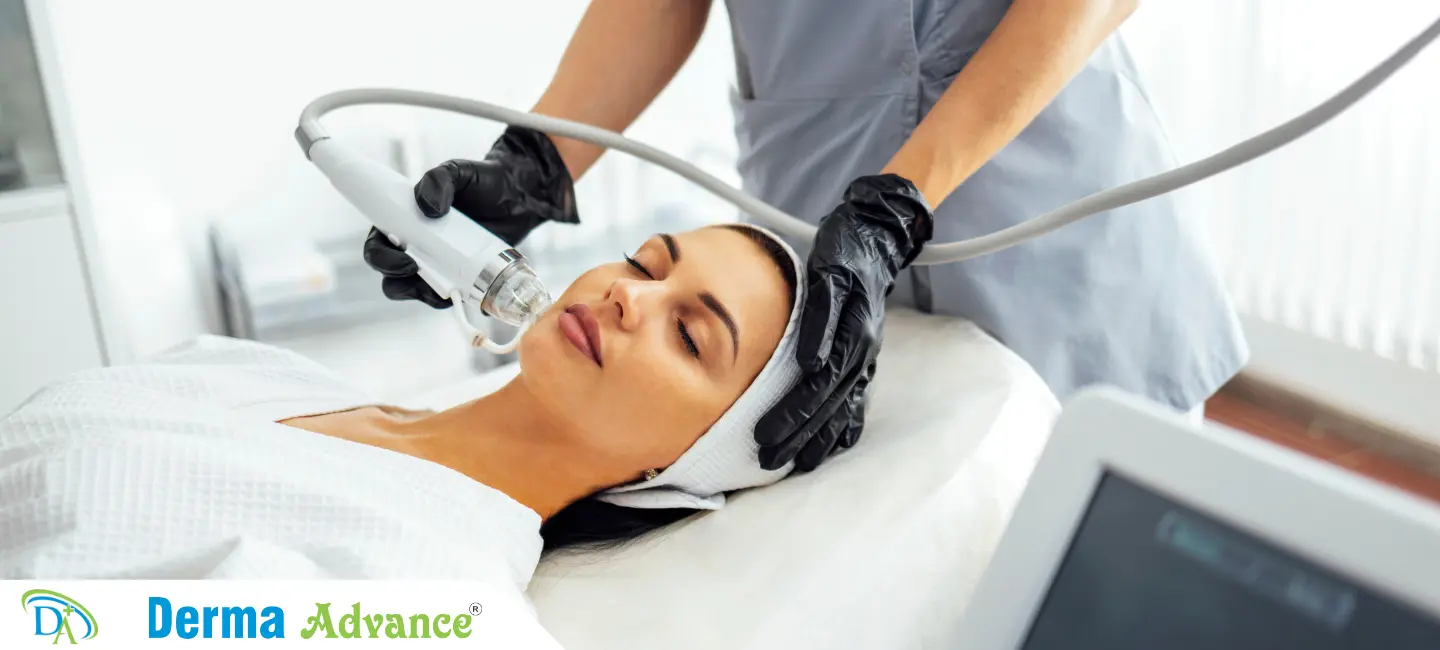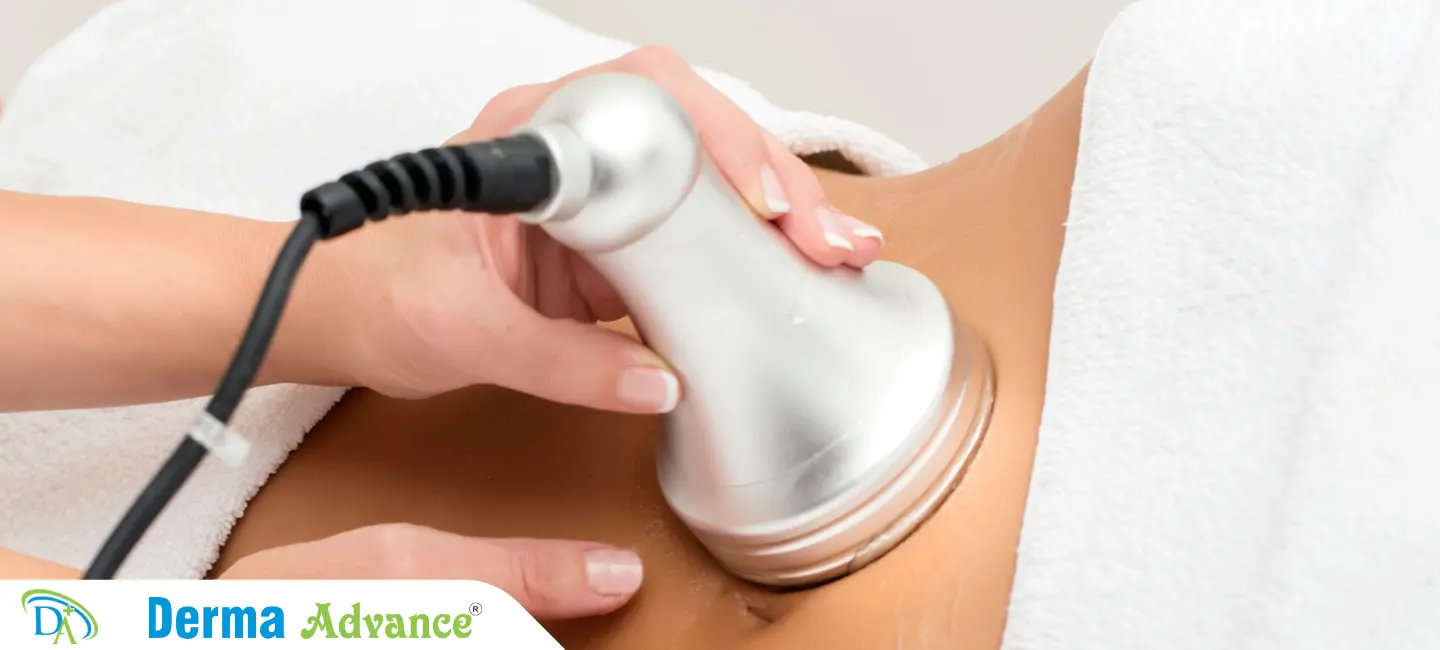What is Skin Tags?
Skin tags are small, soft, benign growths that typically appear in areas where skin folds or rubs together, such as the neck, armpits, and groin.
Skin tags, medically known as acrochordons, are harmless growths of skin that are commonly found in areas where the skin creases or experiences friction. These growths are typically small, ranging from a few millimeters to a couple of centimeters, and are connected to the skin by a thin stalk called a peduncle. Although they can appear anywhere, common sites include the neck, armpits, eyelids, groin, and under the breasts.
While skin tags are benign and usually painless, they can sometimes become irritated by clothing or jewelry, leading to discomfort. They are more prevalent in older adults, those who are overweight, and individuals with type 2 diabetes. Removal is generally for cosmetic reasons or to alleviate irritation, and options include cryotherapy, surgical removal, or ligation.
Immense Care
We aim to provide immense care tailored to manage and treat your health condition. Be assured, you are in safe hands!
Modern Techniques
We provide modern treatments to ensure you get the quickest and most effective solution to your health conditions!
Symptoms of Skin Tags
What are the Symptoms of Skin Tags?
Skin tags are characterized by their small, soft, flesh-colored appearance, often hanging off the skin by a thin stalk. These growths are usually painless and vary in size from a few millimeters to a couple of centimeters. Skin tags commonly develop in areas where the skin folds, such as the neck, armpits, and groin, and are more frequent in people who are overweight or have type 2 diabetes.
Although skin tags are generally harmless and do not cause symptoms, they can become irritated or inflamed due to friction from clothing or jewelry. This can lead to discomfort, redness, and occasionally bleeding. In rare cases, a skin tag may twist, leading to restricted blood flow and causing it to become painful or fall off.
The presence of multiple skin tags can sometimes be associated with other health conditions, such as metabolic syndrome or hormonal imbalances. While skin tags do not pose a serious health risk, their appearance can be bothersome for some individuals, leading to a desire for removal for aesthetic or comfort reasons.
Small, Soft Growths
Skin tags are small, benign growths that are soft to the touch and can vary in size from a few millimeters to a couple of centimeters.
Painless
Generally, skin tags do not cause pain or discomfort unless they are irritated by clothing, jewelry, or other forms of friction.
Flesh-Colored or Slightly Darker
These growths are usually the same color as the surrounding skin or may be slightly darker, and they hang off the skin by a small stalk.
Common Locations
Skin tags typically appear in areas where the skin folds or experiences friction, such as the neck, armpits, groin, and under the breasts.
Potential Irritation
When irritated by friction, skin tags can become red, inflamed, and occasionally bleed, leading to discomfort and the desire for removal.
Associated Health Conditions
The presence of multiple skin tags may be linked to conditions like obesity, diabetes, and metabolic syndrome, indicating an underlying health issue.
Diagnosis of Skin Tags
1
Physical Examination
A dermatologist inspects the skin to identify the soft, benign growths characteristic of skin tags, usually distinguishing them from other conditions.
2
Dermatoscopy
A non-invasive imaging technique where a handheld device, called a dermatoscope, magnifies the skin tag to examine its structure and confirm diagnosis.
3
Biopsy
In rare cases, a small tissue sample may be taken to rule out other skin conditions or malignancies, ensuring the growth is indeed a benign skin tag.
4
Patient History
Reviewing the patient's medical history helps identify risk factors such as obesity or diabetes that may contribute to the formation of skin tags.
5
Differential Diagnosis
The dermatologist distinguishes skin tags from other similar conditions, such as warts or moles, ensuring an accurate diagnosis and appropriate treatment plan.
6
Skin Check-Up
Regular skin check-ups can help in early identification and management of skin tags, preventing them from becoming a cosmetic or physical concern.
Book Your Appointment
Find Solution to Skin Tags Now!
Meet Our Expert Skin Tags Specialists


Treatment of Skin Tags
How is Skin Tags treated?
The treatment of skin tags primarily focuses on their removal for cosmetic reasons or to alleviate irritation. One common method is cryotherapy, where the skin tag is frozen off using liquid nitrogen. This procedure is quick and usually requires no anesthesia, leading to minimal discomfort and quick recovery.
Surgical removal is another option, where the skin tag is cut off using a scalpel or surgical scissors. This method is effective for larger skin tags and typically results in minimal scarring. Ligation, or tying off the skin tag at its base with a string or suture, is also used to cut off blood supply, causing the tag to fall off after a few days.
For those seeking less invasive options, topical treatments that contain tea tree oil or other natural ingredients can sometimes be effective, although these methods may take longer to produce results. It's important to consult with a dermatologist to determine the most appropriate treatment method based on the size, location, and number of skin tags.
Cryotherapy
Involves freezing the skin tag with liquid nitrogen, causing it to fall off within a few days. This quick procedure is usually painless and effective for small tags.
Surgical Removal
The skin tag is cut off with a scalpel or surgical scissors, which is suitable for larger tags and ensures complete removal with minimal scarring.
Ligation
A small string or suture is tied around the base of the skin tag, cutting off its blood supply and causing it to fall off after several days.
Electrocautery
Uses an electrical current to burn off the skin tag. This method is effective and minimizes bleeding but may require a local anesthetic.
Topical Treatments
Over-the-counter creams and natural remedies like tea tree oil can be applied to the skin tag, gradually drying it out and causing it to fall off over time.
Home Remedies
Simple methods such as tying a piece of dental floss around the skin tag to cut off circulation, though these should be approached with caution and professional advice is recommended.
Causes of Skin Tags
1
Friction in Skin Folds
Constant rubbing or friction in areas where the skin folds or creases, such as the neck, armpits, and groin, can lead to the development of skin tags.
2
Hormonal Changes
Hormonal fluctuations, particularly during pregnancy, can increase the likelihood of skin tags forming due to changes in the skin's elasticity and thickness.
3
Genetic Predisposition
A family history of skin tags can increase the risk, suggesting a genetic component in their development and occurrence.
4
Obesity
Excess body weight leads to more skin folds and increased friction, which are conducive to the formation of skin tags.
5
Diabetes
Individuals with type 2 diabetes are more prone to skin tags, potentially due to insulin resistance and its effects on the skin.
6
Aging
Skin tags are more common in older adults, possibly due to changes in skin texture and elasticity as part of the natural aging process.
How to Prevent Skin Tags?
Skin tags are small, soft, benign growths that typically appear in areas where skin folds or rubs together, such as the neck, armpits, and groin.
While skin tags cannot always be prevented, certain measures can reduce their likelihood. Maintaining a healthy weight helps minimize skin folds and friction, which are common sites for skin tags. Wearing loose-fitting clothing reduces friction that can lead to skin tag formation.
Managing underlying health conditions such as diabetes and maintaining good skin hygiene can also help in reducing the risk. Regular skin checks and early removal of small tags can prevent them from becoming more prominent or irritating.

